ba BA-ba DOOK! DOOK! DOOK!
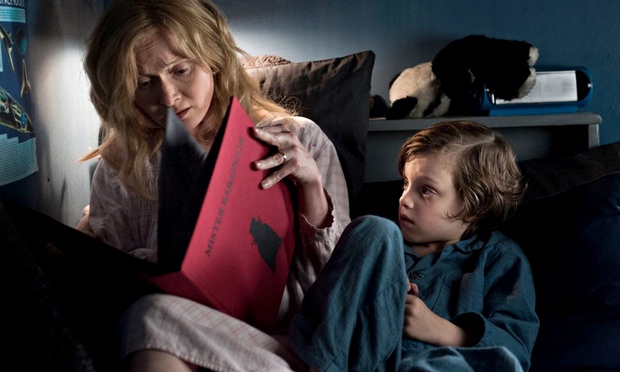
Isn’t the internet a wonderful thing? It has empowered the human race to be able to access virtually every piece of information available to us a species, it is capable of educating, terrifying and communicating. It also allows people to erroneously project thoughts and feelings onto fictional, shallow characters for… reasons.
But long before The Babadook (2014) become a gay icon, it was one of those titles I would hear everywhere. For the longest time, I had never seen it – but understood it to be the most terrifying film ever made. At least, that’s what people around me were saying. Eventually, in some moment of understanding, I actually went ahead and ordered it on Amazon. It was not what I expected, at all.
It was so much better.
If it’s in a word, or it’s in a look
You can’t get rid of the Babadook.
Written and directed by Jennifer Kent, The Babadook begins with a nightmare. Some time ago, Amelia Vanek (Essie Davis) was involved in a car crash that killed her husband while she was in labour. Now, six years later, Amelia has been left to look after her son Samuel (Noah Wiseman) on her own. We see at a glance that it is hard work that has left a permanent strain on Amelia’s life and happiness.
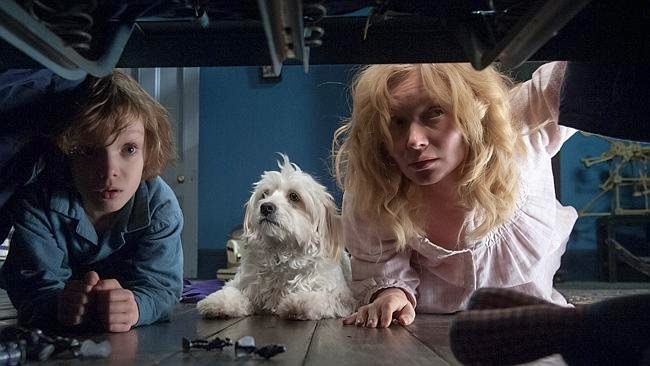
Sam has been suffering from nightmares of a monster coming into his room at night, prompting him to craft weapons to defend himself. This comes to a head when Amelia is called out of work over an incident at Sam’s school after he is found with a homemade crossbow. The school are insistent that Sam has significant behavioural difficulties and needs serious therapy and support, while Amelia insists that he just needs understanding.
He doesn’t need understanding. At this point, Sam seems genuinely uncontrollable and may just be the most irritating child in the world. But then things go wrong. Insisting on a bedtime story, Sam chooses a random pop-up book from his shelf. Despite not seeing it before, Amelia goes ahead and starts to read.
The words are chilling and dark, with nightmarish charcoal drawings, telling of a tall, pale faced monster in a top hat and tails, knocking to get in. Once it is in, says the tale, you will never get rid of the Babadook. For the full effect, I highly recommend heading to the Discover The Babadook website – or even just watching this scene right here:
Amelia is disturbed by the book, but not so much as Sam. Convinced the creature is real, Sam begins to speak into thin air and seeing things that aren’t there. His erratic behaviour becomes more urgent, and Amelia responds by tearing the book into pieces and throwing it in the bins outside the house. Later, Sam claims to have another vision of the Babadook, which leads to him suffering a seizure. He is sedated and removed from school, while Amelia takes some time off work to try and calm things down at home.
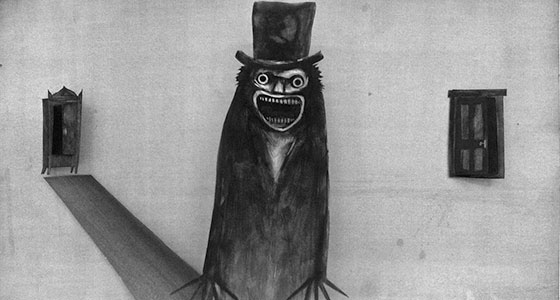
I’ll WAGER with YOU,
I’LL MAKE you a BET.
ThE MORE you DENY
the STRONGER I GET
Later, Amelia finds the Mr Babadook book patched back together, with new pages replacing the previously blank ones seemingly targeted directed at Amelia, who remains in furious denial. With Sam sedated and mostly sleeping, Amelia becomes more and more isolated, suffering visions of the Babadook, its power growing stronger by the day. Then, one night, it makes an offer for the boy.
As the Babadook takes over, the film shifts to Sam, who watches as his mother seemingly becomes someone – or something – else. But, now his nightmares are coming true, can Sam find the strength and courage to survive and save his mum? Or will Amelia be able to resist the darkness inside her?
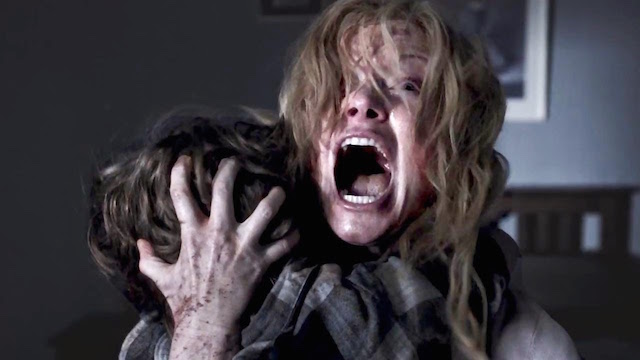
Happy Birthday, Sweetheart.
This is no ordinary ghost story. The power of The Babadook lies in Jennifer Kent’s visual direction and incredibly detailed characters. Essie Davis’, in particular, stands out as the central performance of the film – her body language and visible strain sells the story of a widowed single mother more than words ever can.
What’s more, the Babadook itself is more than just a horror movie monster. While you may find it hard at first not to be reminded of the costume design of The Mighty Boosh (2004), it quickly becomes clear that it is the embodiment of depression and grief – with visual clues throughout the film that his appearance may have more than a passing resemblance to Sam’s late father. The ending, too, isn’t one of escaping – or murdering – the beast. It is just one of acceptance and understanding.
After all, once it gets in, you’ll never get rid of The Ba-Ba Dook. Dook. Dook.
Yours, A P Tyler
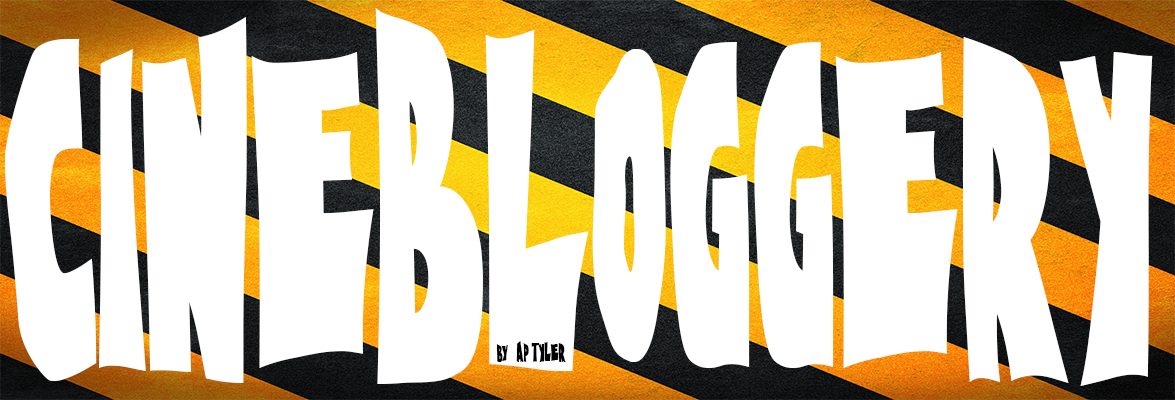
Comments are closed, but trackbacks and pingbacks are open.